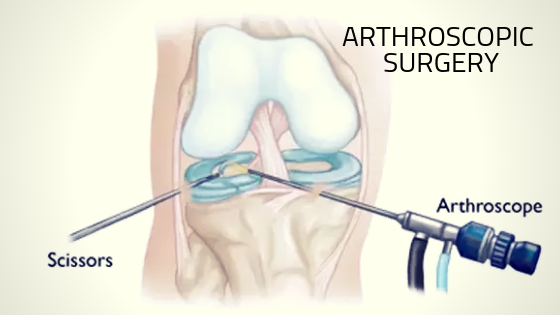Arthroscopy

Overview
Arthroscopy is a minimally invasive surgical procedure that allows doctors, usually orthopedic surgeons, to view, diagnose, and treat problems inside a joint. The procedure uses a small instrument called an arthroscope, which is inserted into the joint through a small incision. The arthroscope contains a camera and a light source that allow the surgeon to view the joint on a video screen in real-time. Arthroscopy is often chosen over open surgery because of its reduced recovery time and lower risk of complications. It’s a common procedure, with more than 4 million being conducted around the world each year.
Types
While Arthroscopy can be used on any joint, it’s most commonly performed on the knee, shoulder, elbow, wrist, ankle, foot, and hip. The specific type of arthroscopy is often named after the joint being examined. For instance, knee arthroscopy for knee joints, shoulder arthroscopy for shoulder joints, and so on.
Causes
Arthroscopy is usually performed to diagnose and treat inside joint conditions that commonly cause symptoms such as pain, swelling, stiffness, and instability. These conditions may arise from a variety of causes, including sports injuries, fall injuries, occupational injuries, aging, and diseases like arthritis.
Symptoms
People requiring arthroscopy usually experience symptoms in the target joint like persistent pain, swelling, stiffness, clicking, instability, or a decreased range of motion. If such symptoms persist despite conservative treatments like medication or physical therapy, your doctor may recommend arthroscopy for a detailed examination or treatment of the joint.
Diagnosis
The decision to undergo an arthroscopy is usually made after a physical examination and review of your medical history. X-rays, MRIs, or CT scans are often performed to get a view of the joint and surrounding structures. In many cases, arthroscopy is both a diagnostic and treatment procedure, allowing doctors to confirm the cause of joint problems and often treat them during the same procedure.
Treatment Options
Depending on the condition found during the arthroscopy, treatments can range from removing loose bodies, repairing or trimming torn cartilage, reconstructing torn ligaments, removing inflamed synovial tissue, or treating osteoarthritis damage. After arthroscopy, most patients typically return home the same day. The recovery process is variable and can depend upon the specific procedure done and the joint involved.
Living With Arthroscopy
After arthroscopy, it’s important to follow post-operative instructions carefully. This often includes taking care of wound sites, using cold packs to control swelling, elevating the joint when feasible, taking pain medications as prescribed, and beginning physical therapy. You might need to wear a sling, brace, or crutches temporarily, depending on the joint involved and the procedure. Ensuring a balanced nutrition including adequate hydration will help your body to recover well.
When to Seek Help
If you experience severe or persistent pain, uncontrolled bleeding or a marked increase in swelling in your affected joint after arthroscopy, it’s best to seek immediate medical attention. Additionally, if you have difficulty breathing, chest pain, or feel lightheaded, these also warrant prompt medical consultation, as they could indicate serious complications.
Remember, the aim of this guide is to provide useful, general information. Always talk to your healthcare provider for personalized advice and information tailored specifically to your situation.
